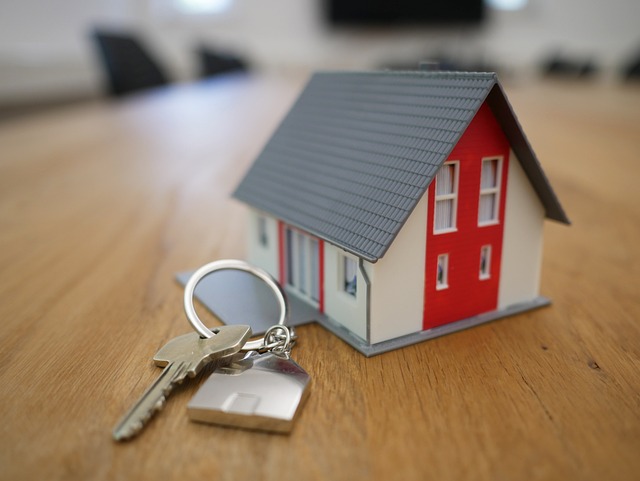How Home Value Is Set: Key Factors That Shape Price
Discover what drives home value and how to influence it. This guide explores the main elements that determine property worth—location, market conditions, size, condition, and upgrades—and explains valuation methods and practical steps homeowners can take to monitor and boost their property's value. Learn which renovations pay off and how professionals assess real estate to make better selling, buying, or improvement decisions.

Understanding what determines a property’s value can help homeowners and buyers make smarter decisions. A home’s worth isn’t set by a single element; it’s the result of many interacting factors—from where the property sits to its size, condition, and the broader economic climate. Below is a clear breakdown of the key influences on home value and actionable advice on tracking and improving your property’s market position.
How size, layout, and features affect price
Square footage, the number of bedrooms and bathrooms, and how floor plans flow are foundational to a home’s market value. Larger homes generally command higher prices, but efficient layouts that maximize usable space often add more perceived value than wasted square footage. Open floor plans, ample storage, and logical bedroom placement can make a smaller house feel more valuable than its measurements alone suggest.
Distinctive amenities also matter. Features like a private view, backyard size, a swimming pool, or speciality constructions (finished basements, sunrooms) can increase desirability and price. However, the premium these additions bring depends heavily on local buyer preferences—what excites buyers in one neighborhood may be less valued in another.
How market conditions drive home prices
Real estate values respond to supply and demand. In a seller’s market—when buyers outnumber available homes—prices tend to climb. When supply exceeds demand, prices can plateau or fall. Broader economic indicators such as interest rates, employment levels, and consumer confidence shape activity: lower mortgage rates usually stimulate demand, while higher unemployment weakens buying power.
Local markets can diverge from national trends. A city experiencing job growth, new businesses, or infrastructure investment can see house prices rise even during a wider market slowdown. That’s why it’s important to consider both national signals and neighborhood-specific trends when evaluating value.
Which renovations typically increase value
Not all improvements deliver the same return. Remodels that address function and curb appeal usually provide the best payback. Kitchens and bathrooms remain high-impact areas: updating cabinets, countertops, fixtures, and energy-efficient appliances often produces strong returns. Adding living area—such as finishing a basement or building an addition—can also raise value, provided the upgrade is consistent with neighborhood standards.
Energy-efficient upgrades (new windows, insulation, efficient HVAC systems) are increasingly attractive and can reduce operating costs, which buyers value. Cosmetic updates—fresh paint, improved landscaping, and modern lighting—can lift a home’s appeal without large investments.
Avoid over-improving relative to surrounding homes. Highly personalized or ultra-luxury changes may not be recouped if comparable properties in the area don’t support those price levels.
How professionals determine a home’s worth
Real estate professionals use several established methods to set a value:
- Comparative Market Analysis (CMA): The most common approach for residential sales, CMAs compare recent sales of similar properties nearby to establish a market-based price range.
- Appraisal (Cost Approach): Appraisers may estimate the replacement cost of the structure plus land value, adjusting for depreciation and local conditions.
- Income Approach: Used mainly for rental or investment properties, this method values a house based on its potential rental income and market capitalization rates.
Appraisers and agents consider the same mix of factors—location, condition, size, recent comparable sales, and market trends. Automated online estimators can give a quick snapshot, but they often miss nuances like interior condition, upgrades, or neighborhood shifts that a trained professional will include.
Why location is often the decisive factor
Location remains the single most influential variable in real estate. Neighborhood safety, school quality, commuting time to job centers, and proximity to public transit, shopping, and parks all shape demand. Even within a single block, small differences—such as being on a quieter street, near a park, or having better views—can create meaningful price differentials.
Long-term value is strongly tied to local infrastructure and economic health. Areas with rising employment opportunities, stable public investment, and desirable amenities tend to see stronger appreciation over time.
Tracking and anticipating changes in your home’s value
Homeowners can monitor value in several ways. Periodic professional appraisals provide the most accurate valuations, especially when preparing to sell or refinance. For regular tracking, online valuation tools and real estate websites offer estimates and trend charts, though they should be treated as indicators rather than definitive values.
Staying informed about local market activity—recent sales, new listings, and time-on-market metrics—helps you spot upward or downward shifts. Also watch for community changes like new employers, transit projects, zoning changes, or commercial developments that can influence demand.
| Upgrade | Typical Cost Range | Typical ROI |
|---|---|---|
| Mid-range kitchen remodel | $15,000–$50,000 | 60–80% |
| Bathroom renovation | $8,000–$25,000 | 60–70% |
| Energy-efficient windows | $5,000–$15,000 | 50–70% |
| Landscaping / curb improvements | $1,500–$10,000 | 100%+ |
| Adding living space (basement/room) | $20,000–$100,000 | 50–75% |
Cost estimates are approximate and will vary by location, scope, and market conditions. Consult local contractors or appraisers for precise pricing.
Understanding home value means looking at the complete picture: physical characteristics, local and national market forces, and professional valuation methods. By focusing improvements where they’re most likely to pay off, watching local trends, and consulting experienced agents or appraisers, homeowners can make informed choices about selling, buying, or renovating. Staying proactive and grounded in local data is the best way to protect and grow your property’s worth over time.






